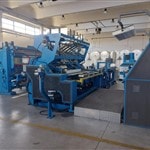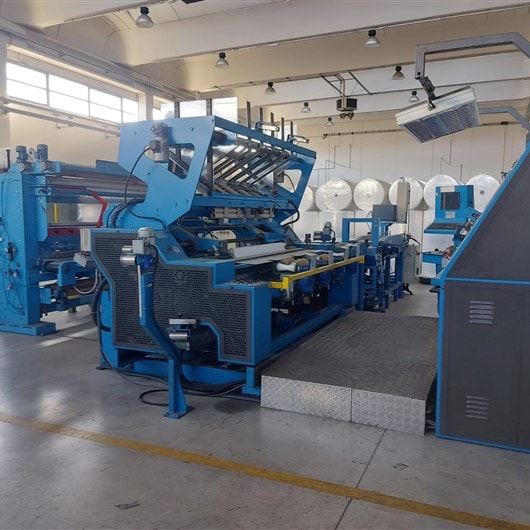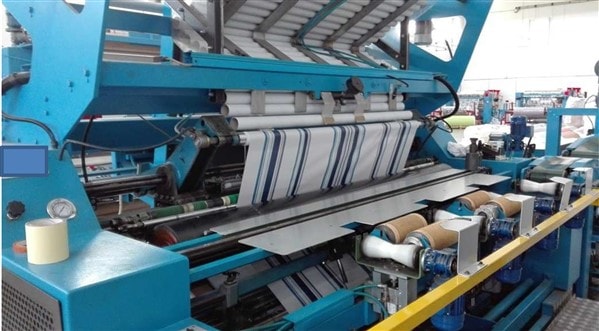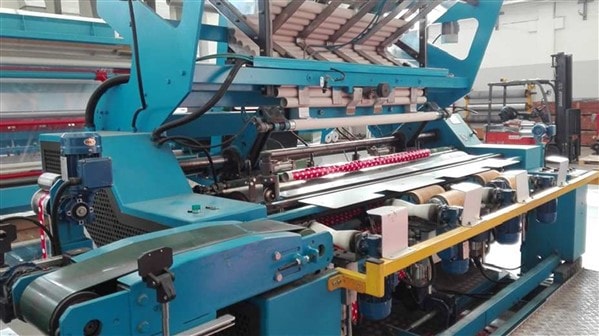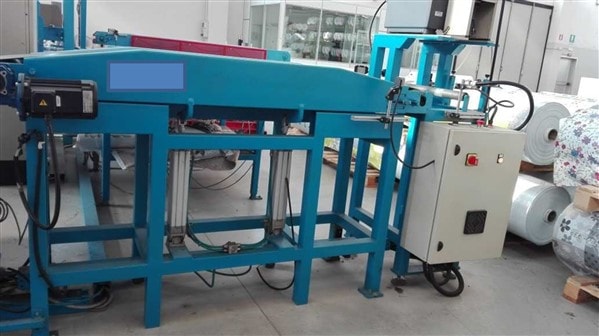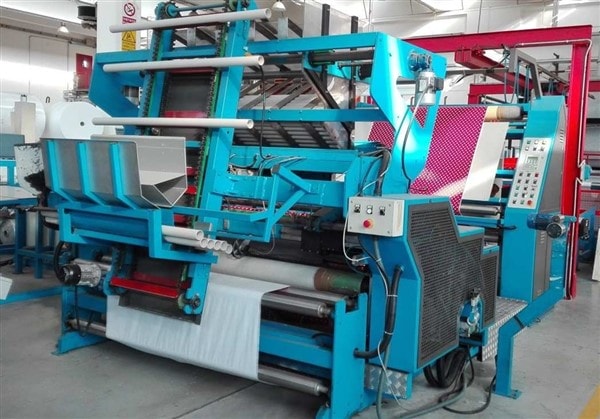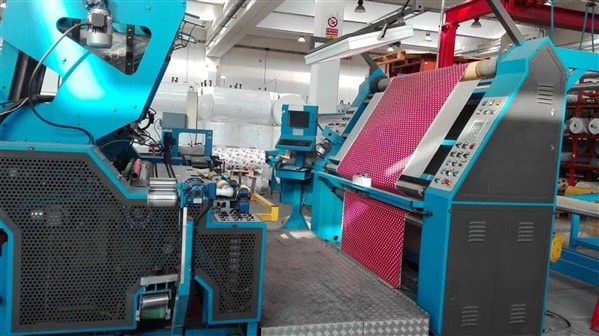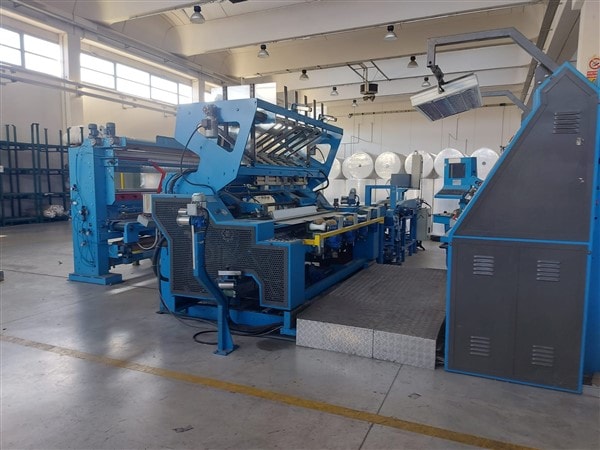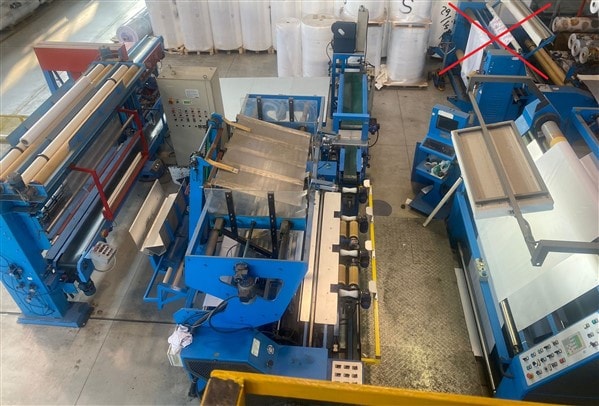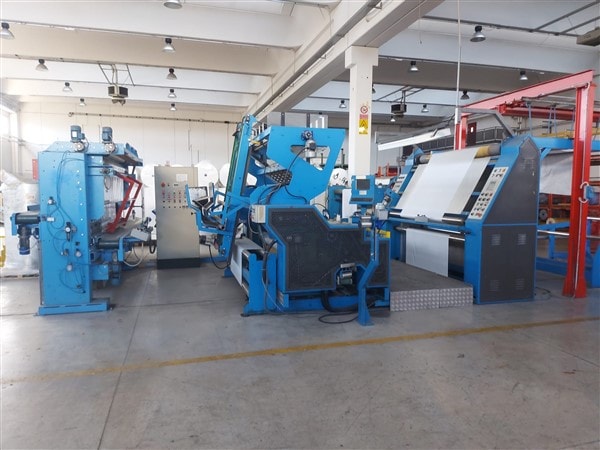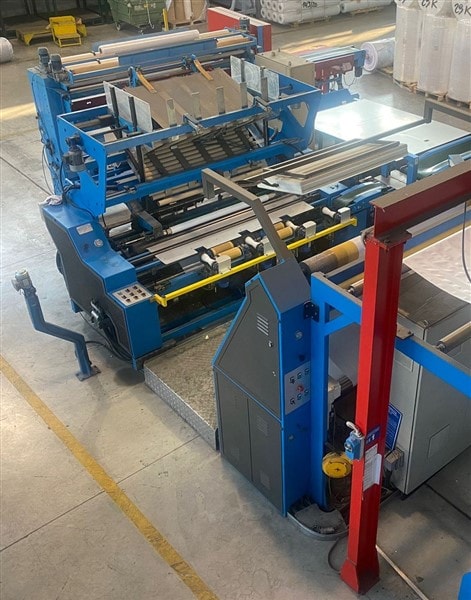USED INSPECTION MACHINE 01 | INSPECTION LINE WITH AUTOMATIC WINDING AND PACKING
Inspection machine with automatic winding unit
The line is composed of:
Rolling Machine
Automatic labeling system for cardboard tubes and rolls
Ultrasonic banding machine, Model Us 2000 AB, for automatic, customized roll sealing
Roll conveyor system with both longitudinal and dorsal belts for wrapping feed
E) Cardboard Tube HOPPER
Purpose of the line:
Automatically check, trim, and rewind
DESCRIPTION:
A) 1 Rolling Machine
Machine constructed of sturdy metal, suitable for unwinding and rewinding rolls of calendered, extruded, laminated, and woven materials.
Main features:
Roller Table 2000
Maximum usable table 1870 x 1800 mm
Minimum usable table 1270 x 1200 mm
Intermediate usable table 1470-1670 x 1400 and 1600 mm
Maximum winding roll diameter: 250 mm
Minimum winding roll diameter: 60 mm
Electrical equipment in a special protective enclosure
Motor voltage: 380/50 Volts + n + T.
Maximum machine speed: 80 rpm
Power consumption: 12.5 kW
Color: BLUE RAL 5015
CHECKOUT
Product checkout built into a separate structure incorporating the winding machine control panel and the following parts:
FEEDING DRIVE via a double rubber-coated cylinder, driven by an AC gearmotor and synchronized to the machine speed via a vector inverter and feedback bus with control encoder. Using an OMRON microcontroller panel, the operator determines a test voltage that adapts to the characteristics of more or less flexible materials.
A PHOTOELECTRIC CELL for material stoppage, mounted on the rear of the machine, and its pneumatic stopper, stops the winding process when the unwinding material detaches from the reel.
A VISUAL TABLE illuminated from above by 4 neon lights with a honeycomb ceiling light for reduced reflection.
A LINEAR CUTTERS for the longitudinal cut position, controlled by an AC gearmotor and synchronized with the movement of the centering carriage.
A TRANSVERSAL REFERENCE for starting and calculating the material.
A CONTROL PANEL mounted on the right inspection shoulder, designed for inspection, complete with general buttons and a touch-screen control panel for managing all machine functions.
A articulated CONSOLE accommodates the start-stop and defect stop buttons and supports the defect sorting function keyboard.
WORK PLATFORM located between the inspection and winding machine, constructed of a metal frame with a chequered aluminum sheet platform.
WINDING MACHINE Ø
Product winding machine constructed of sturdy metalwork, consisting of a fixed base and a mobile carriage housing various automatic devices for winding the product, complete with:
METER COUNTER with mechanical detection via a calibrated wheel and electronic display on a dedicated microcontroller.
TRANSLATION for material centering via a highly sensitive photoelectric cell.
SELVERED TRIMMING using circular scissors-type cutters driven by a dedicated AC motor. Cutting height is adjustable for both the right and left blades via an AC gearmotor and positioning screw. This type of cutter ensures perfect selvedge cuts, both with particularly elastic materials and with thick, rigid materials, without changing the blades.
Trimmings are removed from the sides of the machine using special antistatic belts supported by an anti-cordal aluminum profile structure. The rotation speed can be increased as the machine speed varies.
CONTACT WINDING on a cylinder covered in vulcanized rubber with a hardness of 50 Shore A and an external diameter of 400 mm, driven by an AC gearmotor synchronized to the speed requirements via a vector inverter and a feedback bus with a control resolver.
SIDE ARMS for housing the cardboard tube allow the product to be wound in contact with the cylinder. The roll is unloaded onto a conveyor belt and the cardboard tube is loaded in the intermediate position.
FIXING the cardboard tube using pneumatic pressure heads with independent controls for attaching and pulling the roll. The constant tension rotation of the feeder allows for combined wrapping.
Pressure-operated rotary cutter for cross-cutting in a dedicated translation guide.
Automatic operator-controlled start for the first cycle, automatic for subsequent cycles.
Height-adjustable cardboard tube hopper, suitable for supporting cardboard tubes with an internal diameter of 50 mm, with a minimum width of 1250 mm and a maximum width of 1850 mm.
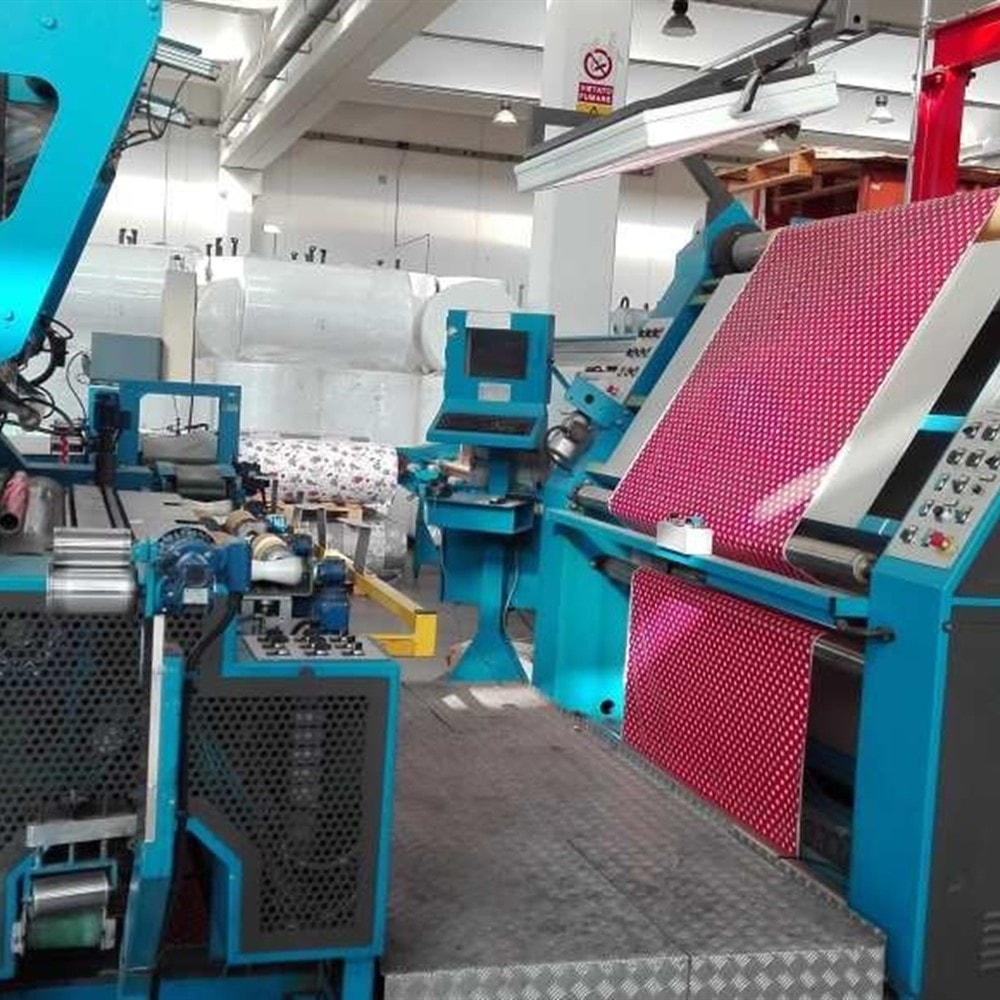
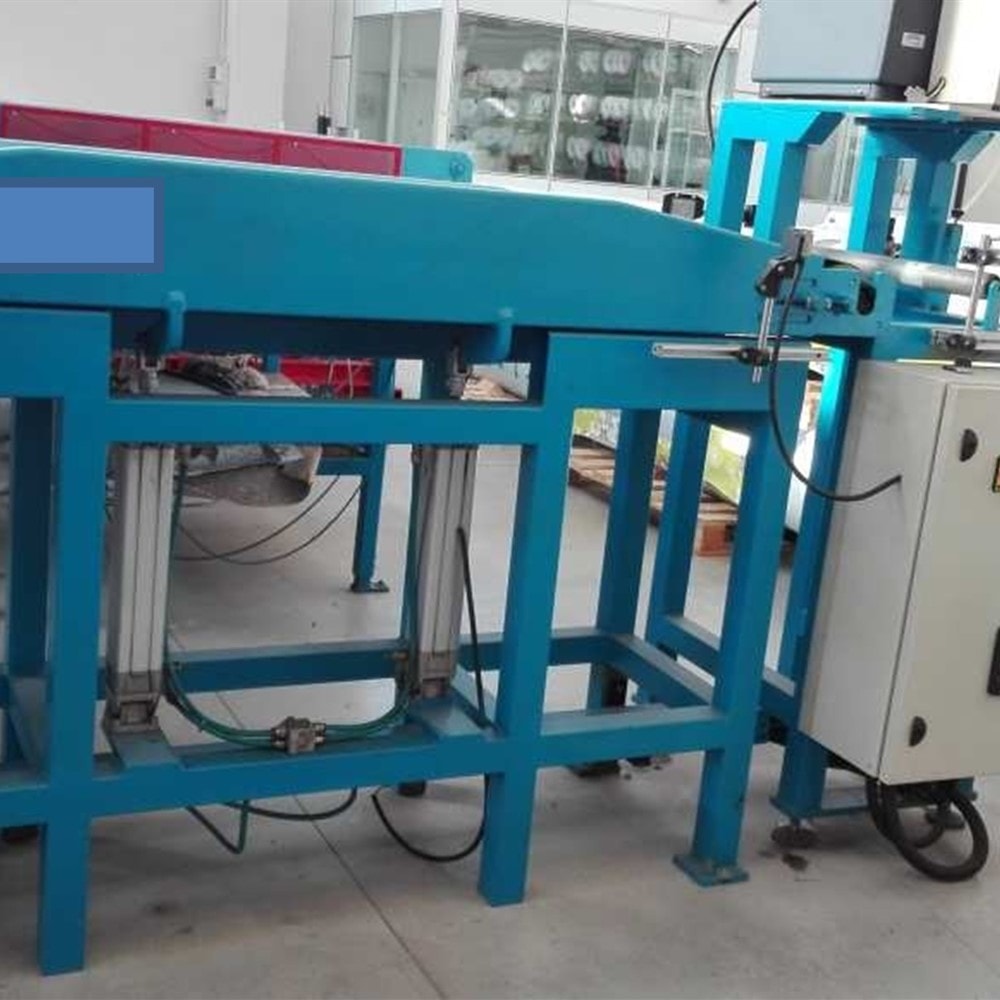
Imballatrice
The line is composed of:
Automatic labeling system for cardboard tubes and rolls
Ultrasonic banding machine Mod. Us 2000 AB for automatic, customized roll sealing
Roll conveyor system with both longitudinal and dorsal belts, for packaging machine feed
Automatic labeling system for cardboard tubes and rolls
01 BANDING MACHINE MOD. US 2000AB
General characteristics:
Belt height: 30 mm.
Arch dimensions: width 260 mm – height 260 mm.
Works with white or transparent polypropylene banding. Thanks to the adjustable band tension, this banding machine is suitable for the production of fragile and delicate products, as well as heavy ones such as books, magazines, and boxes.
The machine operates both in manual mode with a dedicated foot pedal, and in automatic mode. In automatic mode, a specific operating time can be set from when the item is placed on the table.
The major advantages of ultrasonic welding are the extremely clean weld, free of slag or material deposits, no preheating required, and, above all, a consistently perfect and consistent weld, electronically controlled by a microprocessor.
Technical specifications:
Adjustable welding plate height: from 750 to 990 mm. Production speed: 15-22 cycles/minute.
Electrical system: 220 Volts, 50 Hz.
Devices required to put the banding machine online:
INTERFACE BOARD
Side machine control panel
ROLLER CONVEYOR BELT SYSTEM consisting of:
Longitudinal motorized PVC belts to allow extraction of the packaged roll, 300 mm wide, 4500 mm long, driven by an AC gearmotor.
BACK-MOUNTED PVC ROLL CONVEYOR BELT for feeding the step-by-step wrapping machine, complete with separators to prevent the rolls from falling.
Dimensions: 1300 x 1500 mm.
Height-adjustable cardboard tube hopper, designed to hold cardboard tubes with an internal diameter of 50 mm, with a minimum width of 1250 mm and a maximum of 1850 mm.

 Italiano
Italiano